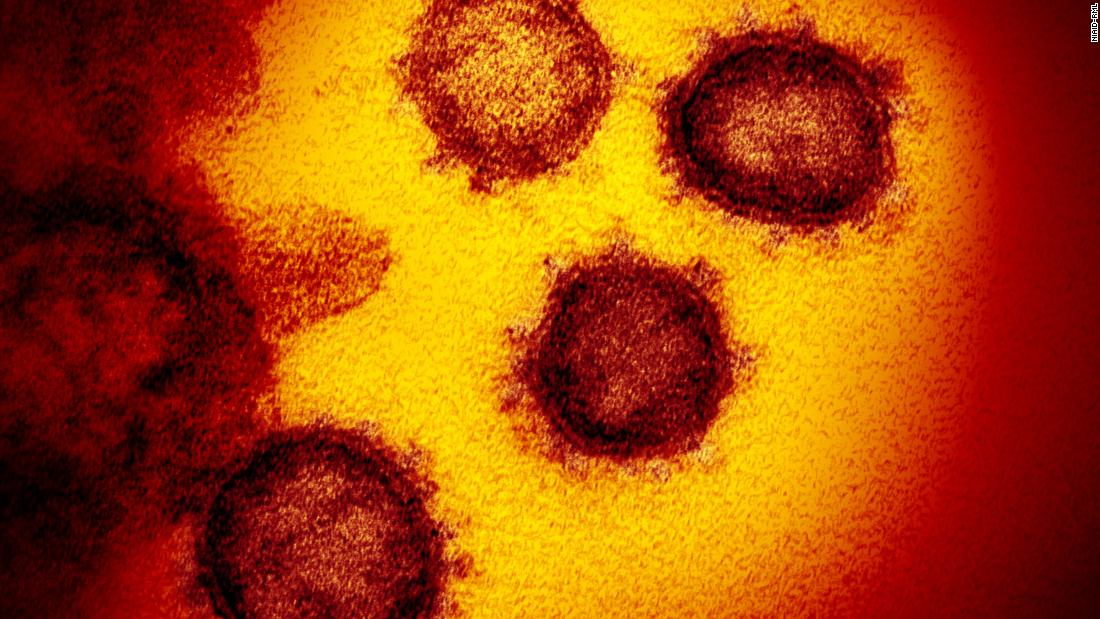Expert warns of infections in autumn and winter 1:10
(CNN) -
The US Centers for Disease Control and Prevention (CDC) updated the guidance on its website to say that coronavirus can be commonly spread "through respiratory droplets. or small particles, such as aerosols', that are produced in the air even when a person breathes.
"Viruses that are transmitted through the air, including covid-19, are among the most contagious and easily spread," the site now says.
Previously, the CDC page said that Covid-19 was thought to spread primarily between people in close contact, around 2 meters.
And "through respiratory droplets produced when an infected person coughs, sneezes or talks."
The page, updated on Friday, still says that covid-19 is most often transmitted between people who are in close contact with each other.
And now he says that the virus is known to spread "through respiratory droplets or small particles, such as aerosols, produced when an infected person coughs, sneezes, sings, speaks or breathes."
These particles can cause infection when "inhaled through the nose, mouth, airways and lungs," he says.
"This is believed to be the main way the virus spreads."
'There is growing evidence that airborne droplets and particles can remain suspended in the air and be inhaled by others.
And travel distances greater than two meters.
(For example, during choir practice, in restaurants or gymnastics classes) », says the page now.
"In general, indoor environments without good ventilation increase this risk."
LEE
: The coronavirus can spread on airline flights, two studies show
Protect yourself and others
The CDC also added new measures to its information on how to protect yourself and others.
Previously, the CDC suggested maintaining a "good social distance" of about 2 meters.
Also, routinely wash hands, clean, and disinfect surfaces.
And cover your mouth and nose with a mask when you are around other people.
Now, he says "stay at least 2 meters away from others whenever possible."
And he continues to instruct people to wear a mask and to routinely clean and disinfect.
However, she now also says that people should stay home and isolate themselves when they are sick.
And "use air purifiers to help reduce germs in the air indoors."
Masks, he notes, should not replace other prevention measures.
The update also changed the language around asymptomatic transmission, from saying "some people without symptoms can spread the virus" to saying "people who are infected but show no symptoms can pass the virus to other people."
Scientists lobbied for airborne transmission to be recognized
For months, scientists have watched the likelihood of coronavirus transmission through airborne viral particles and lobbied health agencies to recognize it.
In April, a prestigious scientific panel told the White House in a letter that research showed that the coronavirus can be spread not only by sneezing or coughing, but also by speaking, or possibly even simply breathing.
"While current [coronavirus] specific research is limited, the results of available studies are consistent with aerosolization of the virus from normal respiration," according to the letter.
This was written by Dr. Harvey Fineberg, former Dean of the Harvard School of Public Health and chair of the NAS Standing Committee on Emerging Infectious Diseases and Health Threats of the 21st Century.
"Currently available research supports the possibility that [the coronavirus] is spread through bioaerosols generated directly by exhalation from patients," the letter read.
And in July, 239 scientists published a letter urging the World Health Organization and other public health organizations to be more forthcoming about the likelihood that people could contract the virus from airborne droplets. .
They ask to demystify the air transmission of covid-19 1:58
"Current guidance from numerous national and international bodies focuses on handwashing, maintaining social distancing, and precautions against drops," the scientists wrote in the letter, published in the journal
Clinical Infectious Diseases.
“Most public health organizations, including the World Health Organization, do not recognize airborne transmission, except for aerosol-generating procedures performed in healthcare settings.
Handwashing and social distancing are appropriate but, in our opinion, insufficient to provide protection against the transmission of viruses through respiratory droplets released into the air by infected people, "they added.
"A major improvement"
After the publication of the letter, the WHO released a report detailing how the coronavirus can be passed from one person to another.
Even through the air during certain medical procedures and possibly through the air in crowded indoor spaces.
On Sunday, one of the letter's lead authors, Donald Milton, a professor of environmental health at the University of Maryland who studies how viruses are transmitted, said the CDC's new language was a "major improvement."
“I'm very encouraged to see that the CDC is paying attention and moving the science forward.
The evidence is mounting, ”Milton wrote in an email to CNN.
He described a pre-print article published in August.
In this, the scientists described the cultivation of viable viruses in the air in a hospital, as "an important addition to the reports of large outbreaks that were clearly the result of transmission by aerosols that travel more than 2 meters."
"It is time for the WHO to acknowledge these advances in science," Milton said.
CNN's Maggie Fox, Elizabeth Cohen, Jacqueline Howard, and Jamie Gumbrecht contributed to this report.
CDC









